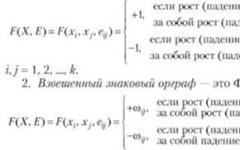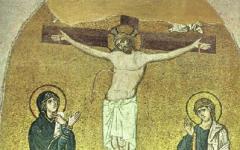Когда речь заходит о сатанизме, многие представляют секты из маньяков, которые поклоняются Дьяволу и приносят кровавые жертвы. В истории известно несколько сатанинских сект, представители которых совершали действительно ужасные поступки, но такие факты есть, пожалуй, в каждом из религиозных течений. На самом деле сатанизм представляет собой противоположность традиционным христианским ценностям, например, таким, как воздержание или принцип «если тебя ударят по левой щеке - подставь правую». В нашем сегодняшнем обзоре некоторые из сект сатанистов.
1. Храм Сатаны

Храм Сатаны является организацией, которая, вероятно, не будет соответствовать представлению большинства людей о сатанизме. Ведь их целями является "поощрение доброжелательности и сочувствия", а также "использование практического здравого смысла и справедливости".
Последователи Храма Сатаны, равно как и поклонники Антона ЛаВея, не поклоняются Сатане в его библейском представлении. Они видят в Сатане символ мятежника против тирании и власти. Независимо от этого, поклонники Храма Сатаны считают свою организацию религией. Они заявляют, что религия должна быть основана на науке и критическом мышлении, а не сверхъестественных или суеверных претензиях. Эта группа стала известной свои противостоянием американской баптистской общине Уэстборо, известной своими выступлениями против геев, а также тем, что возвела статую Бафомета в Детройте.
2. Люциферианство
Люцифериане довольно похожи на сатанистов Ла Вея. Большинство из них нерелигиозны и просто относятся к Люциферу, как к символу. "11 точек Силы", которые пропагандирует Церковь Люцифера, иллюстрируют представление таких ценностей, как самоопределение и освобождение от "рабского менталитета". В связи с этим, люциферианство относится больше к философии, а не к фактической религии.
Церковь Люцифера утверждает, что основная цель люциферианства - помочь людям "взять на себя ответственность за их собственную жизнь и использовать весь потенциал собственной гениальности". Возможно, самое большое различие между люциферианами и сатанистами ЛаВея - то, что Люцифер (Светоносный) является символом знаний, в то время как Сатана (Противник) представляет похоть и оппозицию.
3. Основанный на христианстве дуотеизм

Христианский дуотеизм является небольшим течением теистического сатанизма. Эта форма сатанизма признает, что что христианская теология является правдой, а также что до сих пор продолжается война между Богом и Сатаной. Основным отличием является то, что это течение сатанистов поклоняются дьяволу, а не Богу. Они считают, что Бог и Сатана являются двумя наиболее мощными существами во Вселенной и что Сатана имеет достаточно сил, чтобы в конечном итоге осилить Бога и выиграть извечную войну.
4. Анти-Космический Сатанизм

Анти-Космический Сатанизм, также называемый Хаотическим Гностицизмом, считает, что космический порядок, созданный Богом, является иллюзией, за которой стоит бесконечный и бесформенный хаос. Наиболее известным практиком этой формы сатанизма является оккультист "Vexior 218". В интервью Vexior объяснил, что он верит в всемогущего бога по имени Демиург, который интерпретируется как Один в скандинавской религии и Бог в христианстве. А такие фигуры, как Локи и Сатана появились, чтобы стать бунтарями против тиранического правления демиурга. К прочим анти-космическим богам относятся Тиамат, Ваал, Асмодей, Лилит и многие другие.
5. Трансцендентальный сатанизм

Трансцендентальный сатанизм - уникальная форма сатанизма, созданная человеком по имени Мэтт "Господь" Зейн. Во время написания книги о своей религии он принимал ЛСД и якобы к нему явилось видение сатаны, сброшенного с небес, а затем еще одно видение человека, который заключает договор с сатаной еще до своего рождения. Трансцендентальный Сатанизм - форма духовной эволюции с конечной целью индивидуального воссоединения с тем, что называется сатанинским аспектом. Сатанинская аспект - якобы скрытая часть сознания любого человека.
6. Демонолатрия

Демонолатрия буквально означает "поклонение демонам", хотя современные демонолаторы на самом деле не поклоняются демонам. Вместо этого, они "работают" с демонами, рассматривая их как некую силу или энергию, которую на самом деле можно призвать для помощи в ритуалах или магии. Традиционные же демонолаторы на самом деле поклоняются демонам, олицетворяющим определенные атрибуты и свойства. Каждый демонолатор выбирает свое собственное божество-покровителя, одним из которых является Сатана, представляющий элемент огня.
7. Сетианцы

Храм Сета был основан бывшей правой рукой ЛаВея, Майклом Акино, который оставил Церковь Сатаны после ЛаВей начал продавать храмы. В Храме Сета был разработан ряд философий, отличающихся от Церкви Сатаны. В то время как сатанисты ЛаВея не верят в какого-либо бога или божество, сетианцы верят в сверхличность, известную как Сет. Сет - египетский бог насилия и беспорядка, который в итоге стал известен как бог тьмы и враг всех других египетских богов. Другими словами, он является "настоящим сатанистом", противопоставляя себя всем ложным богам.
Сатанисты ЛаВея считают, что каждый член их секты сам для себя бог, и этого состояния нужно достичь. Целью сетианцев является достижение "хепер" (это египетское слово примерно означает "Я пришел в бытие").
8. Красные сатанисты

Красные сатанисты не верят в Сатану в традиционном смысле, а рассматривают его в качестве темной силы, которая существовала с сотворения мира. Тани Джантсанг, один из самых выдающихся деятелей красных сатанистов, считает, что слово "Сатана" происходит от двух досанскритских слов: SAT (безграничная тьма) и TAN, которое описывает, как эта древняя сила проникает в другие вещи. Согласно девяти "Сатанинским Постулатам", каждое существо мотивируется внутренней силой, постоянно меняется и развивается в соответствии с окружающей средой. Те, кто идет против своей природы, называются кипплоты и они являются, по мнению красных сатанистов, злом.
9. Политеистический сатанизм

Политеистический сатанизм - вера в многочисленных богов, а не в одного бога. Самой известной политеистической сатанистской организацией является Церковь Азазеля - группа из Нью-Йорка, открытая для всех сатанистов, оккультистов и последователей "Пути левой руки". Они почитают несколько различных божеств, таких как Сатана, Азазель, Лилит, Прометей, Иштар, Пан, Люцифер и София (гностическая богиня, у которой много параллелей с историей Люцифера, а также с историей Адама и Евы).
Все эти боги были демонизированы авраамической религией, но они представляют собой ценности и принципы, которые обычно не любит современная религия. Например, Прометей представляет знание и понимание, а Иштар представляет природу и сексуальность. Сатана же - воплощение свободного мышления и сомнения в догмам.
10. Культ Ктулху

Существует целая религия, которая смешивает писания Говарда Лавкрафта с сатанизмом, черной магией и "Путем левой руки". Она известна как Культ Ктулху. Венгер Сатанис, основатель этой секты, признает, что многие люди не принимают писания Лавкрафта за существующую реальность. Сатанис утверждает, что каждый человек формирует свою собственную реальность по своему желанию.
Культ Ктулху утверждает, что Древние жили на Земле бесчисленные тысячелетия тому, и что они распространяют свое темное, запретное и тайное знание людям и поныне. Восставшие Младшие Боги были побеждены, а их пролитая кровь создала вселенную. Некоторым из выживших Малых Богов удалось вырваться и они изгнали Древнейших, которые сейчас спят и ждут своего часа.
Последователи традиционных религиозных течений уверены, что поклонники Сатаны обязательно попадут в ад. Мы представляем нашим читателям .
: в игре стало мало разговоров и кино, но много блужданий и головоломок. Это не было бы проблемой, но сюжет провисал, а декорации не менялись, и оттого уже не впечатляли, как раньше. Нас явно пытались аккуратно запутать, усыпить бдительность, добавить размазанности и неопределенности. Близился финал, и пора было делать сюрпризы. И сюрпризы случились.
Четвертый эпизод такой же короткий, как два предыдущих, но при этом яркий, энергичный и в каком-то смысле дерзкий, потому что пытается играть на опережение с игроками. В нем уже нет сложных многоэтапных загадок с библейскими иносказательными цитатами, хотя дважды придется перебирать много информации: чтобы написать зашифрованное письмо Папе Римскому и чтобы определить, какое копье Лонгина из дюжины настоящее. Письмо пишется проще, чем кажется на первый взгляд, хотя игра в итоге не дает четкой уверенности в том, что ты ничего не перепутал, и тебя не раскроют. Возможно, это аукнется в финальной серии, которая выйдет через два месяца.

С копьем Лонгина то же самое и даже хитрее. В игре много развилок, но в той сюжетной линии, где оказался я, вся эта большая головоломка по поиску копья в итоге ни к чему не привела. Целая глава уходит на то, чтобы по крупицам собрать информацию о том, как на самом деле выглядело копье. Факты часто противоречат друг другу. Ты не уверен, тебя хитро дезинформируют или наоборот, говорят правду. Есть элемент риска. Ты расспрашиваешь персонажей, рассматриваешь статуи и картины, читаешь заметки и книжки, а в итоге центральный и, возможно, самый главный сюжетный поворот всей игры сводит все на нет. О произошедшем словно предлагается забыть. Допускаю, что в каких-то сюжетных линиях будут серьезные последствия. Также допускаю, что копье - это ружье на стене, которое еще выстрелит.
Хотя в эпизоде хватает ощущения, что выбор что-то значит. Последствия предыдущих серий, накопленная информация и разные, почти забытые поступки всплывают в жарких диалогах на повышенных тонах либо расширяя место для маневра, либо сужая его. Четвертый эпизод изо всей силы возвращает свою главную фишку с диалогами-противостояниями. Обычно они трехактовые, не все сложные, но почти все имеют серьезные последствия. А еще здесь есть трупы: много трупов. Теперь игра избавляется от персонажей с удивительной легкостью, незаметно стряхивая с себя налет Агаты Кристи и Дэна Брауна.


The Council меняет жанр. Буквально перед самым финалом она сбрасывает маски, желая лишний раз зацепить, пока не стало скучно. Желая опередить догадки и сразу пойти в наступление. Она делает это быстро, смело и нагло. Прямо в лоб. Авторы решили, что лучшая защита - это нападение, и у них получилось. Сюжетно четвертый эпизод вдыхает в сериал новую жизнь. Он раскрывает все интриги и закручивает много новых перед самым занавесом.
Больше того, он открывает целый мир. Устанавливает новую вселенную со своими правилами, традициями, конфликтами, дополнительной скрытой историей и потенциально большим будущим. The Council оказывается игрой, способной стать законченным произведением, и в то же время дать жизнь новым историям. Она может быть многосезонной. Правда, здесь она сталкивается с нашей жестокой реальностью. Уже сегодня можно сказать, что The Council вряд ли коммерчески успешна. Про нее мало пишут и еще меньше говорят. Маловероятно, что продолжение будет. Остается надеяться только на хороший финал. И отдельно на то, что у разработчиков хватит ума не делать его слишком открытым. Жирная точка всегда лучше, даже если у вас в запасе много идей.
Осталось уйти красиво.
The artists and works below have made a major impact on the art world and stood the test of time. Many of the artists themselves led fiercely original, enigmatic lives-challenging convention with every brushstroke. Some delved into the dark hearts of men and found there the uncompromising force of nature we call Satan. Some, like Hans Bellmer, elaborated on a Satanic theme of note (Artificial Human Companions). A few actually painted "sacred" art for patrons or even by choice. (See "Finding the Devil in Sacred Art" below) All are masters whose works are worthy of aesthetic appreciation-sure to set the Infernal imagination aflame. Following this timeless list, we"ve compiled a list of "Dark, Occult & Recent Satanic Art" to include many of the diabolical suggestions we"ve received from Church of Satan members.
SATANIC ART 101
Francis Bacon
(1909-1992)
Painter
Screaming popes, perverse eroticism, and a raw, undefiled aesthestic that demonstrates that the beast in man does get some exercise from time to time.
Links: Frances Bacon Image Gallery
Edvard Munch
(1863-1944)
Painter
While his “The Scream” may have inspired one too many blow up dolls and mousepads, other dark treats like “Madonna,” “Vampire,” and “The Sick Child” are not to be missed.
Links: Munch Museum
Goya
(1746-1828)
Painter
Goya enjoyed the spoils of royal favor as First Court Painter in Madrid for most of his life. For pleasure, he delved into the black depths of the human psyche with disturbing studies of madhouses and prisons. His enigmatic etchings and groundbraking “black paintings” are of particular note.
Links: Museo Prado (Image 1) , Museo Prado (Image 2)
Gustav Doré
(1832-1883)
Engraver, Illustrator
Illustrated Milton’s “Paradise Lost” and Dante’s “Divine Comedy.”
Links: https://www.stedwards.edu/hum/klawitter/milton/dore/dore14.htm ,
https://www.fortunecity.com/rivendell/mage/719/index5.html ,
Dore at ArtPassions
Hieronymus Bosch
(1450-1516)
Painter
A Surrealist before his time, Bosch"s alternately grotesque and fantastic depictions of medieval life send the imagination into overdrive. His various “hellscapes,” like the one in his “Last Judgement,” and are essential visions of the Pit.
Links: https://www.artandculture.com/arts/artist"artistId=907
Pieter Bruegel the Elder
(1525-1569)
Painter
Links: Bruegel at Artchive
William Blake
(1757-1827)
Poet/Writer, Illustrator & Painter
The uninitiated might be most familiar with Blake"s "The Great Red Dragon and the Woman Clothed in Sun" through the first installment in the Hannibal Lecter film series (Red Dragon). A poignant starting point for the Satanist, to be sure, but this fiercely original and religiously rebellious thinker and illustrator offers a wealth of work so distinctive that it defies classification.
Links: Blake at Artchive
Odilon Redon
(1840-1916)
Painter, Engraver
Redon"s pictures are very dark and full of stories. The link below shows a piece that was one in a series he created dedicated to Edgar Allan Poe. These lithographs do not illustrate Poe"s work, but are instead "visual poems." In the link below, the piece is called “The Eye Like a Strange Balloon Mounts Toward Infinity.” The eye represents the eye of God but as opposed to the traditional form of the symbol (like on the back of a US dollar bill), Redon has an entire eyeball in the place of a hot-air balloon that drifts purposelessly through the sky.
Links: Redon at Artmagick
Jean-Jacques Feuchère
(1807-1852)
Sculptor
Academic sculptor and friend to Baudelaire, his brooding “Satan” is both romantic and beastly.
Links:
August Rodin
(1840-1917)
Sculptor
His work in bronze has a visceral, even barbaric quality. See especially "The Gates of Hell" and related works.
Links: Musée Rodin (Fr), Rodin Museum (US)
Caravaggio
(1571-1610)
Painter
His grotesque treatment and choice of religious subjects have caused many to speculate that he may have been a non-believer. In any case, the mercurial Caravaggio rebelled against the fashion of his times and bathed his subjects in a stark and evocative combination of darkness and light that often serves as the textbook example of chairoscuro.
Links: Caravaggio at Artchive , Webmuseum
Hans Bellmer
(1902-1975)
Photographer/Sculptor
A surrealist known for his hauntingly beautiful and strangely erotic drawings, etchings and photographs. His famous poupées (dolls), articulated female figurines, show a LaVeyan taste for Artifical Human Companions.
Links: , Dolls of Hans Bellmer
Felician Rops
(1833-1998)
Painter
Obsessed with femmes fatales
, this symbolist painted woman as Satan"s accomplice-rendering man a mere puppet.
Links: Musee Felicien Rops , Fine Arts Museums of San Francisco
Otto Dix
(1862-1942)
Painter
His grotesque paintings depicting the his experiences in World War I evoke the horrorific nature of the beast we know as man. His less political works are darkly beautiful, and sure to please those enamoured with the 1920s and 30s.
Links: https://www.spartacus.schoolnet.co.uk/ARTdix.htm
https://www.mess.net/galleria/dix/
Max Ernst
(1891-1976)
Painter
Surrealist who painted almost Lovecraftian landscpes, a wonderfully grotesque “Temptation of St. Anthony” as well as some powerful images melding humans and birds.
Links: Ernst at Artchive
Reginald Marsh
(1898-1954)
Painter
"Sketched and painted the most earthy, sweaty and lusty examples of humanity he could lay his eyes upon."-Anton Szandor LaVey, The Devil"s Notebook -
"Erotic Crystallization Inertia"
Links: Marsh at Artchive
Luis Ricardo Falero
(1851-1896)
Painter
"A Vision of Faust" or "The Departure of the Witches."
Links: Falero at Artmagick
George Grosz
(1893-1959)
Painter
Earthy caricaturist who captured the beast in man.
Links: Grosz at Fine Art Museums of San Francisco
Ivan Allbright
(1897-1983)
Painter
Dubbed the "Magical Realist," Albright is respoinsible for the dizzyingly morbid portraits of Wilde"s Dorian Gray commissioned for the Hollywood film "The Portrait of Dorian Gray."
Links: Cegur.com , Traditional Fine Art Online
Salvador Dali
(1904-1989)
Painter, Entrepreneur, Performance Artist, etc.
Dali created some of the most memorable psycho-sexual images from the Surrealist movement (the melting clocks) and even designed a dream sequence for Hitchcock’s “Spellbound.”
Links: Salvador Dali Museum (FL, US), Fundacio Gala-Salvador Dali
Giorgio de Chirico
(1888-1978)
Painter
The enigmatic stories behind de Chirico"s paintings are a mystery even to the artist himself. Filled with symbols, one gets the feeling that every single object in the painting is an omen, a desperate warning that there is imminent danger, an urgent message that absolutely MUST get through, but has no way of being understood. The distorted perspective, placement of figures and objects, and choice of colors all add up to a feeling of uneasiness and helplessness for the viewer to behold and cherish. Di Chirico called these paintings "metaphysical paintings." He said of them, "We who know the signs of the metaphysical alphabet are aware of the joy and the solitude which are enclosed by a portico, by the corner of a street, or even in a room, on the surface of a table, or between the sides of a box-the minutely accurate and prudently weighed use of surfaces and volumes constitutes the canon of the metaphysical aesthetic."
Links: https://www.mcs.csuhayward.edu/~malek/Chirico.html
https://www.mcs.csuhayward.edu/~malek/Chirico.html
De Chirico at Artchive
Paul Delvaux
(1897-1994)
Painter
In contrast to the warm plains and desert wastelands made famous by fellow Surrealist Dali, Delvaux"s dreamscapes and placid, wide-eyed nudes are often enveloped in velvety, moonlit night. See especially "The Entombment,""The Sabbath,""Tribute to Jules Verne."
Links: Delvaux at the Guggenheim , Delvaux Foundation & Museum
Franz von Stuck
(1863-1928)
Painter
A symbolist painter whose entrancing femmes fatales
are sure to appeal to witches and warlocks alike. “Fighting Fauns,” “Inferno” and “Sisyphus” may also appeal to darker tastes.
Links: Stuck at Artmagick , https://cgfa.sunsite.dk/stuck/index.html
Marcel Duchamp
(1887-1968)
Many-Media
Duchamp could be considered a Cubist, Surrealist, or perhaps most appropriately, a Dadaist. He never declared himself a member of any movement, making no alliances and often blurring the lines between movements. Duchamp"s work can really only be considered a prime example of "Question All Things." Duchamp wrote his own epitaph, which probably best sums him up: "D"ailleurs, c"est toujours les autres qui meurent." ("Anyway, it"s always other people who die.")
Links: Understanding Duchamp , Duchamp at Artchive
Henry Fuseli
(1741-1825)
Painter
Demonic dreamscapes like "The Nightmare,""The Night-Hag Visiting the Lapland Witches," are sources of diabolical inspiration. Fuseli was apparently so taken with Milton’s Paradise Lost
that he opened “The Milton Gallery” and devoted it to his works on this theme.
Links: Fuseli at Artmagick , Engravings after Fuseli’s Miltonian paintings
El Greco
(1541-1614)
Painter
Known for his oddly elongated humans and strangely hued landscapes, his images were a personal, mystic vision.
Links: El Greco at Artchive
Aubrey Beardsley
(1541-1614)
Engraver
Famous for his sinuous and erotic renditions of scenes from the works of Oscar Wilde and covers for the notorious Yellow Book
, his images were long considered the epitome of decadence.
Links: Beardsley at Artpassions
Giovanni Piranesi
(1720-1778)
Architect, Print maker
His images of prison galleries with bizarre architecture and impossible geometry inspired many to come later in their depiction of desolate interiors.
Links: Piranesi at Artchive
Hogarth
(1697-1764)
Engraver, Painter
Associate of the notorious Sir Francis Dashwood (of "Hellfire Club" infamy), Hogarth produced such diabolical classics as "The Rake"s Progress” series.
Links: Hogarth at Artchive , Hogarth at Artcylclopedia
Man Ray
(1890-1976)
Photographer
Pioneering surrealist photographer developed haunting, ghostly images with remarkable style.
Links: Man Ray Photo , Man Ray at Artchive
FINDING THE DEVIL IN SACRED ART
Some may balk when it is suggested that art intended to express "sacred" themes might be considered Satanic. It seems an obvious contradiction. Some artists in the list above even claimed to be fervently religious, either in a traditionally pious or in a more convenient, abstract sense. Art may communicate, and surely art is the expression of the artist"s intent-otherwise it"s merely accident. However, as viewers, our appreciation of art transcends the artist"s original intent. We naturally project our own experiences, our own perceptions; we are free to impose or discover "meaning."
Satan is the King of this World. He permeates all facets of life, and his carnal laws apply to every man and woman and beast of the field. This, of course, includes devout religionists of all flavors. Evidence of the Beast in man is perhaps most striking in the pious man. The carnal nature of man is woven through the history and dogma of every religion on earth, even (and often especially) where it is most vehemently denied. As sure as you"ll find masturbation in a monastery, you"ll find Satan in sacred art. So, it may behoove you to take some time to explore sacred art as you would the art of obvious heretics.
In Mexican and medieval Catholic devotional art you"ll find a perverse fixation on the macabre, with all the vivid gore and trappings of a modern horror film. In the Italian Renaissance, sensuality and appreciation for the human body eclipsed generic religious frameworks. Purient fantasies abound in later art, from the lascivious "Lot and His Daughters" to the homo-erotic depictions of Saint Sebastian; even the scantily clad Christ that hangs in nearly every Catholic church today.
Robert Crumb
(born 1943)
Comic Artist
Crumb is considered the grandfather of the Underground Comix (the "x" was intended to set the Underground scene apart, as well as emphasize "X-Rated") scene, which began in the late 60s. His Comix depicted things that other people just didn"t dare draw before him, including incest, rape, murder, and racial stereotypes. Despite his usually dark subject matter, the Art was usually drawn in a cartoony, fun style, which helped add to the contrast (and controversy). Throughout the late 60s and early 70s, many cartoonists were copying Crumb"s style, which lead to his style becoming synonymous with the era.
Links: Crumb Products , Crumb Museum
Odd Nerdrum
(born 1944)
Painter
Dark and full of symbolism. He has created some paintings that are a true incarnation of fear. A de facto-Satanist in the way he taught himself how to paint in a classical style, during a time when classical Art was frowned upon. No school would teach it to him because "modern" Art was all the rage. So, he set about his own journey.
Links: Odd Nerdrum Official Site
"Ghastly" Graham Ingles
(1915-1991)
Comicbook Artist
Works of Note: Worked for the now-infamous EC Comics, the company that published the classic Horror Comics of the 1950s. Ingles earned his nickname for taking horror comics to an innovative extreme.
Links: EC Art
Henry Darger
(1892-1973)
Illuminator"
Henry Darger was not a Satanist. He was not a de facto Satanist. He was a dishwasher and was likely insane. His uniquely twisted artwork was created in isolation during his life, yet propelled him to significant recognition in death.
Links: Realm of the Unreal , American Folk Art Museum
Andres Serrano
(born 1950)
Photographer
Andres Serrano"s "Piss Christ" stirred up a lot of controversy in the late 1980s and helped to spark a national debate between fierce religionists and supporters of freedom of expression, especially with regards to the public funding of "offensive" art. (an age old debate, to be sure). Serrano creates images in which things that are generally considered opposites come together. The vulgar and the refined, the hideous and the attractive-all become synonymous. This concept is considered a nefarious imposition to the Postmodern art world, but has evolved from an aesthetic that has been used by artists since the Baroque era. Serrano, speaking of his art: "In my work I always seek the unusual, or at least what is not traditionally considered beautiful. In my work I try to find the normal in the strange and vice-versa."
Links: Realm of the Unreal , American Folk Art Museum
Mark Ryden
(born 1963)
Painter
Unsettlingly innocent, playfully macabre.
Links: Mark Ryden
Coop
(born 1968)
Painter, Poster Artist
Church of Satan Magister Coop is everywhere! His full-figured Devil Girls have conquered a legion of fans.
Links: Coopstuff
Timothy Patrick Butler
(born 1968)
Painter, Illustrator, Print Maker, Web Designer
Butler has produced an amazing array of elaborate creatures both fantastic and grotesque, as well as having written a guide to them that elucidates and obfuscates simulateneously.
Links: Weird Art
Stephen Kasner
(born 1970)
Painter, Print Maker
Kasner creates moody renditions of subtly mutated images which can disturb as one strives to resolve their essence.
Links: Stephen Kasner
Joe Coleman
(born 1955)
Painter
A misanthropic painter whose images are wrought with astonishing detail. Coleman chronicles the dark side of the human animal, often explored through his own torturous journey through life.
Links: Joe Coleman
Bill Ward
(1919-1998)
Cartoonist
The “King of Glamour Girl Art.”
Links: Bill Ward Official Site
Robert Williams
(born 1937)
Comic Artist, Painter
Springing from the Custom Car Culture and underground comics, Williams has evolved into what might be called a psychedelic Surrealist.
Links: I’d Rather Be Dead Than Mellow , Robert Williams at Lines on Paper
Marion Peck
(born 1963)
Painter
Creepy, sexy, pretty weird. Worth a peek.
Links: Marion Peck
Michael Hussar
Painter
Dark, a little "carny" and exquisitely rendered. This artist is so perfectly self-satisfied and self serving that he profoundly dislikes parting with his paintings at all-though a few have escaped into prestigious private collections.
Links: Hussar Exhibitions
Mary Ellen Mark
(born mid 1940s")
Photographer
Considered a “humanist” but often known for disturbing imagery.
Links: Mary Ellen Mark Official Site
Jan Saudek
(born 1935)
Photographer
Links: Jan Saudek Official Site
Matthew Barney
(born 1967)
Multi-media
Nancy Spector"s introduction to the Cremaster Cycle book reads "Only The Perverse Fanstasy Can Still Save Us." Indeed. Barney"s exploration of the artistic impulse, mythological archetypes and less obvious peculiarities of male sexuality draw him into the realm of the revolutionary and occult. If you look closely enough, there are nods to Satanic symbolism to be found in his strange and visually stunning work.
Links: Barney at the Guggenheim
Frank Frazetta
(born 1928)
Painter, illustrator
One of the guiding lights of the genre of fantasy art in the 20th Century.
Links: Frank Frazetta"s Official Site
Boris Vallejo
(born 1940s")
Painter, illustrator
Began with Frazetta-inspired imagery, but soon found his own erotic vision which has a broad fan base.
Links: Imaginistics
Bernie Wrightson
(born 1948)
Comic Artist
Considered a Horror legend, not many comicbook artists have captured the macabre like Wrightson. He is probably most well known for his work on Swamp Thing
, which he co-created.
Links: Official Site
Edward Gorey
(1925-2000)
Illustrator
Perhaps most famous for his "Gashlycrumb Tinies." His pen and ink illustrations always capture a delightfully macabre perspective.
Links: Edward Gorey House
Charles Addams
(1912-1988)
Creator of the classic "Addams Family " cartoons, as well as a host of darkly humored pieces for The New Yorker
.
Links: Biography at BBC
"Sailor Jerry" Collins
(prime activity in the 1940s)
Tattooist
Long before sorority girls started getting "cute" tattoos, real sailors were getting inked in classic style by "Sailor Jerry." This guy is "The Real McCoy."
Links: SailorJerry.com
Hannes Bok
(1914-1964)
Pulp Illustrator
Considered a "bad boy" in the Pulp Comics era, Bok lost many commissions due to his unwillingness to allow Editors to tell him what he could and could not do. Many of his drawings were considered very taboo for the time period, not only costing him commissions but friendships as well. But despite his unruly attitude toward his bosses and the atmosphere of his art, Bok created almost 150 covers and illustrated hundreds of drawings for Pulp magazines. Aside from his outstanding artwork, Bok was also an author and an astrologer.
Links: Bokanalia
Virgil Finlay
(1914-1971)
Pulp Illustrator
Finlay was very good at many drawing techniques. His stippling added depth and mood to his fantastic subject matter, and was so good that it almost didn"t make it into the Pulps. The reason being because it was uncertain if the cheap pulp paper that the Pulps were printed on would be able to show the level of skill and detail that were in Finlay"s originals. But fortunately for hundreds of impending fans, a test print showed that enough of the detail in the originals pulled through to show that Finlay"s art was that of a technical genius. He had hundreds of fans, including H.P. Lovecraft who not only wrote Finlay fan letters, but also composed a poem about Finlay"s art.
Links: Biography , Virgil Finlay Illustrated
Sidney H. Sime
(1867-1942)
Pulp Illustrator
Sime"s art always had a wonderfully dark atmosphere, whether it was in the art itself or in the subject matter of the piece. He quickly gained notoriety for this dark art and began receiving commissions for many art magazines of his day.









